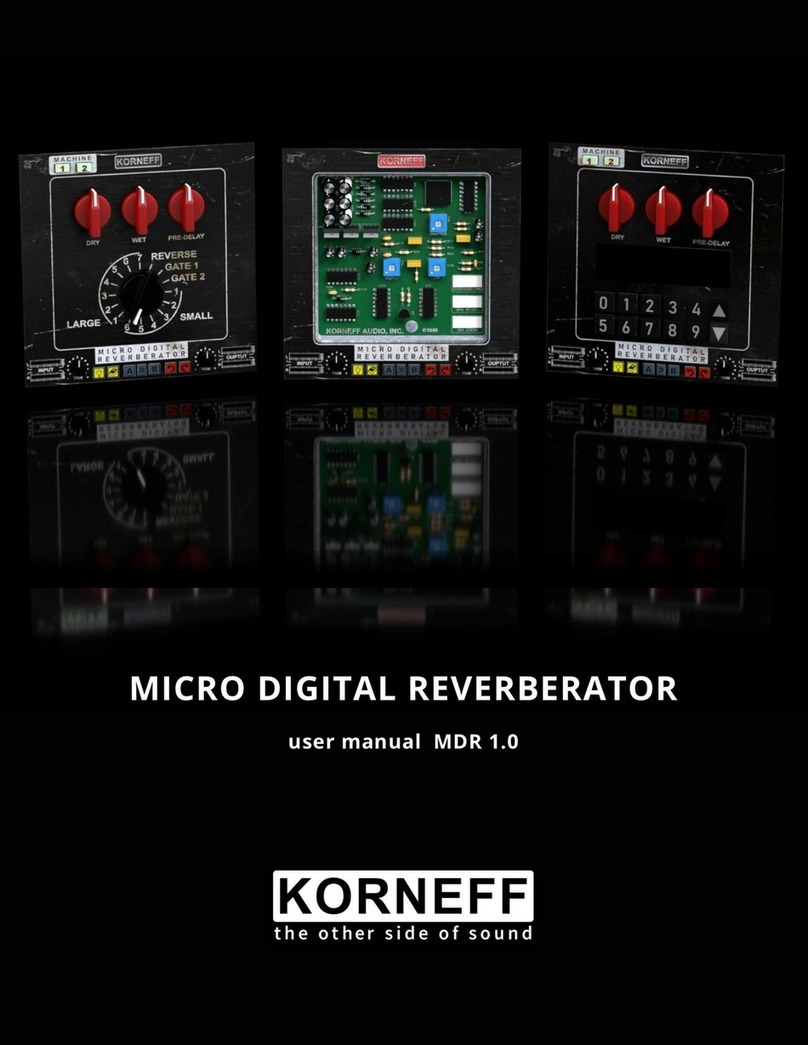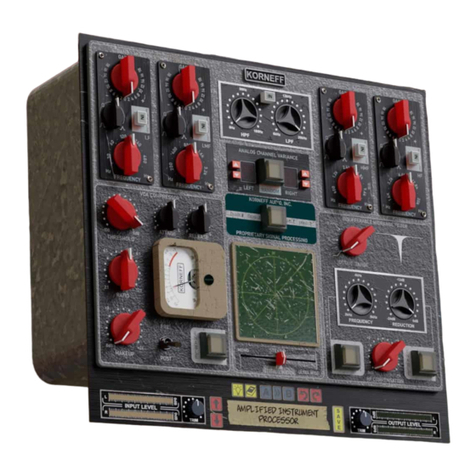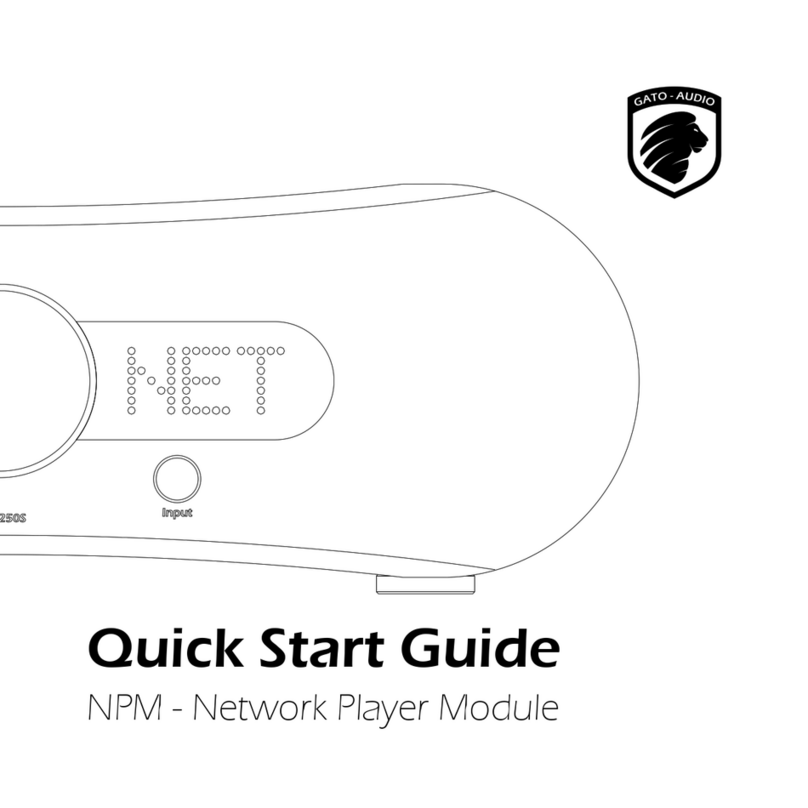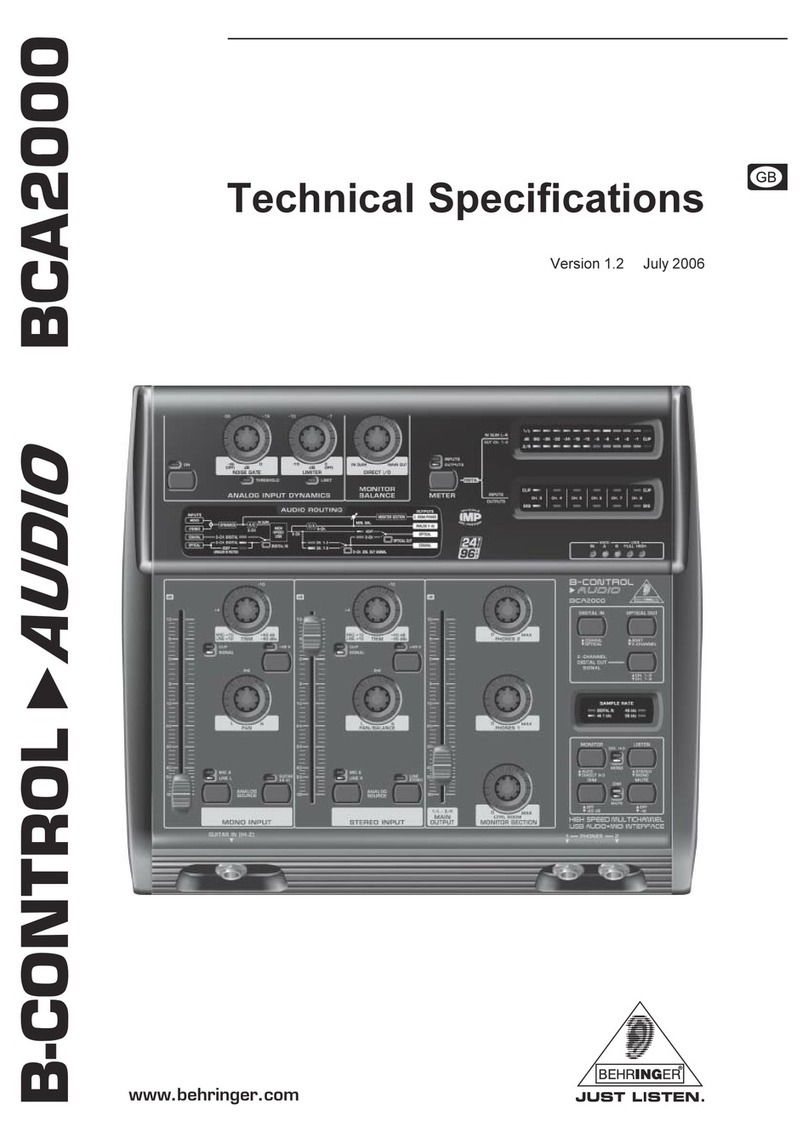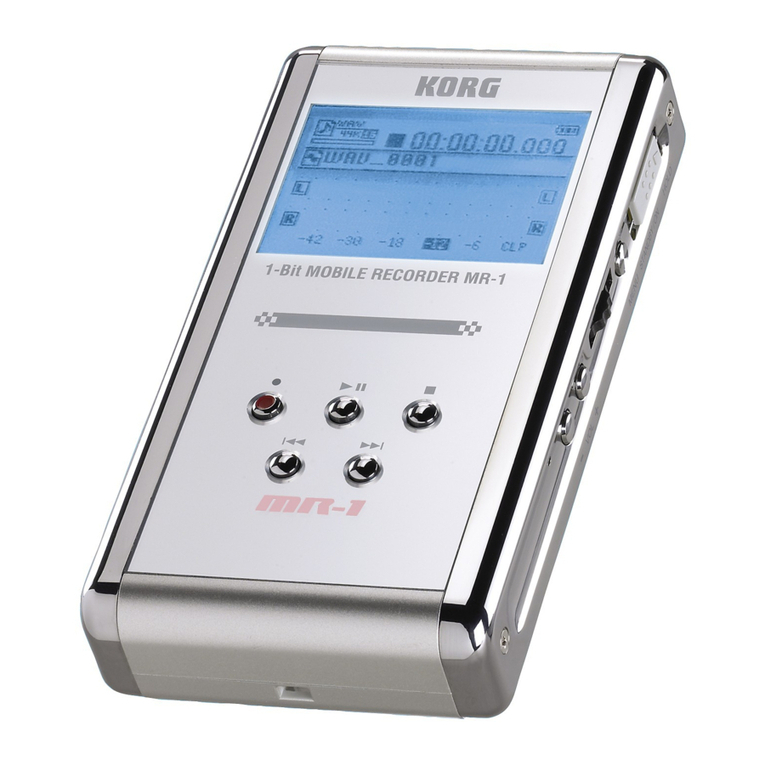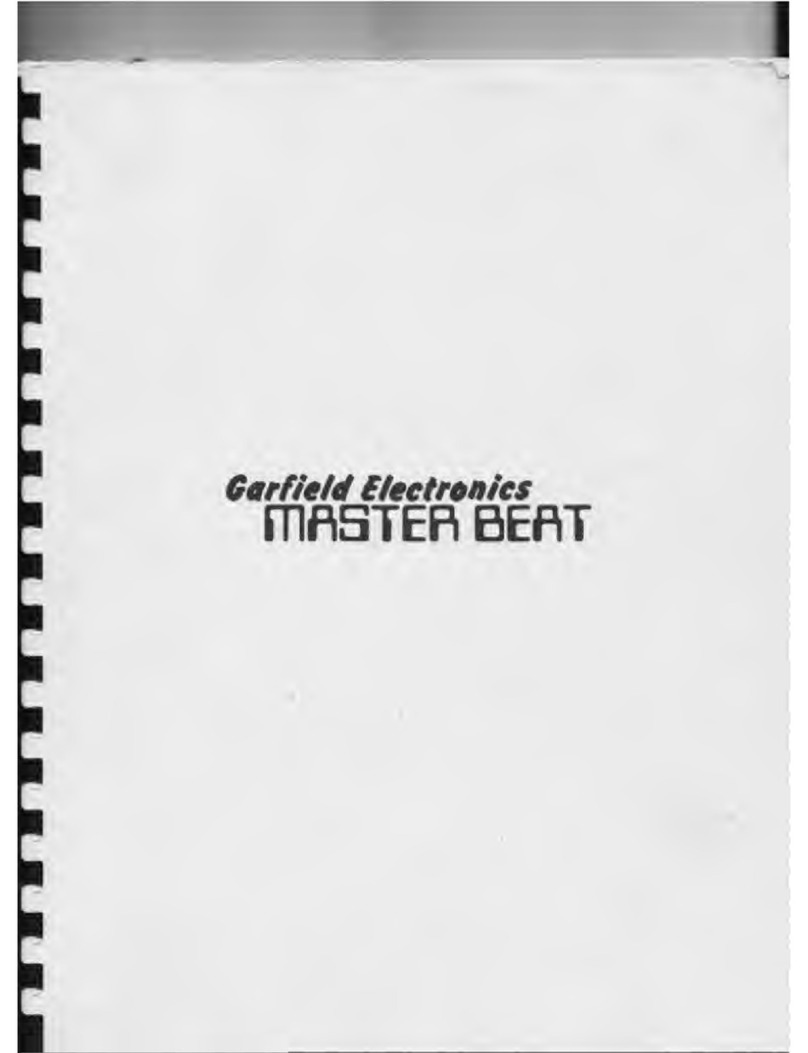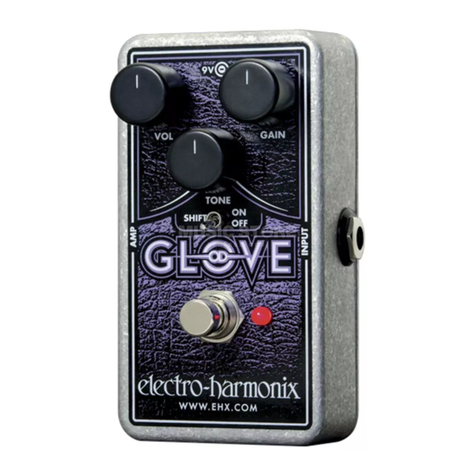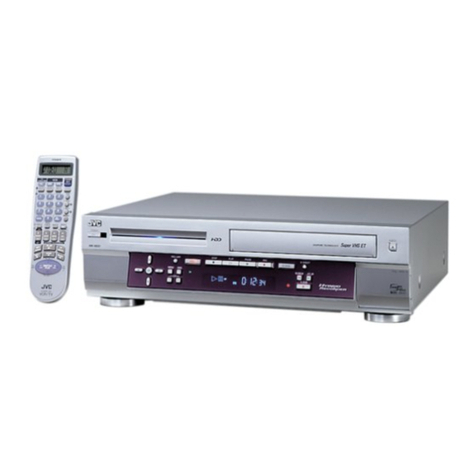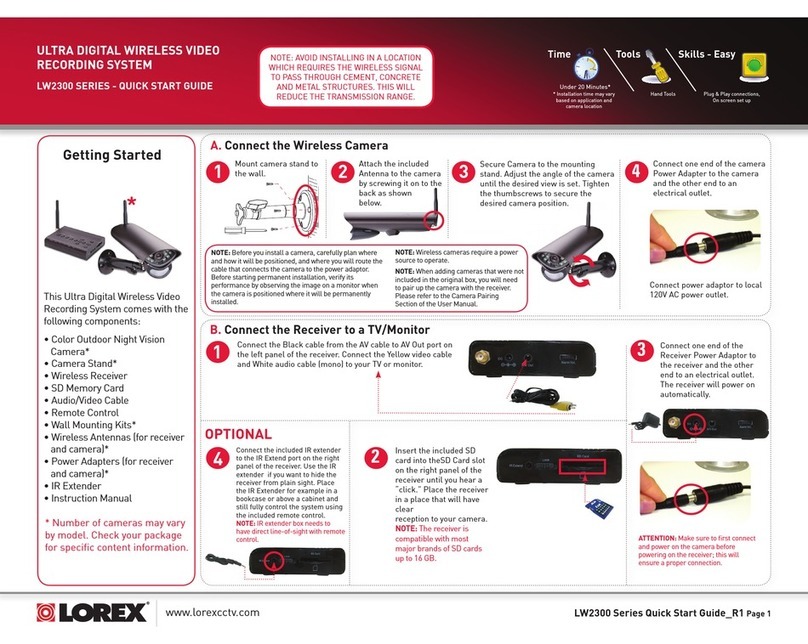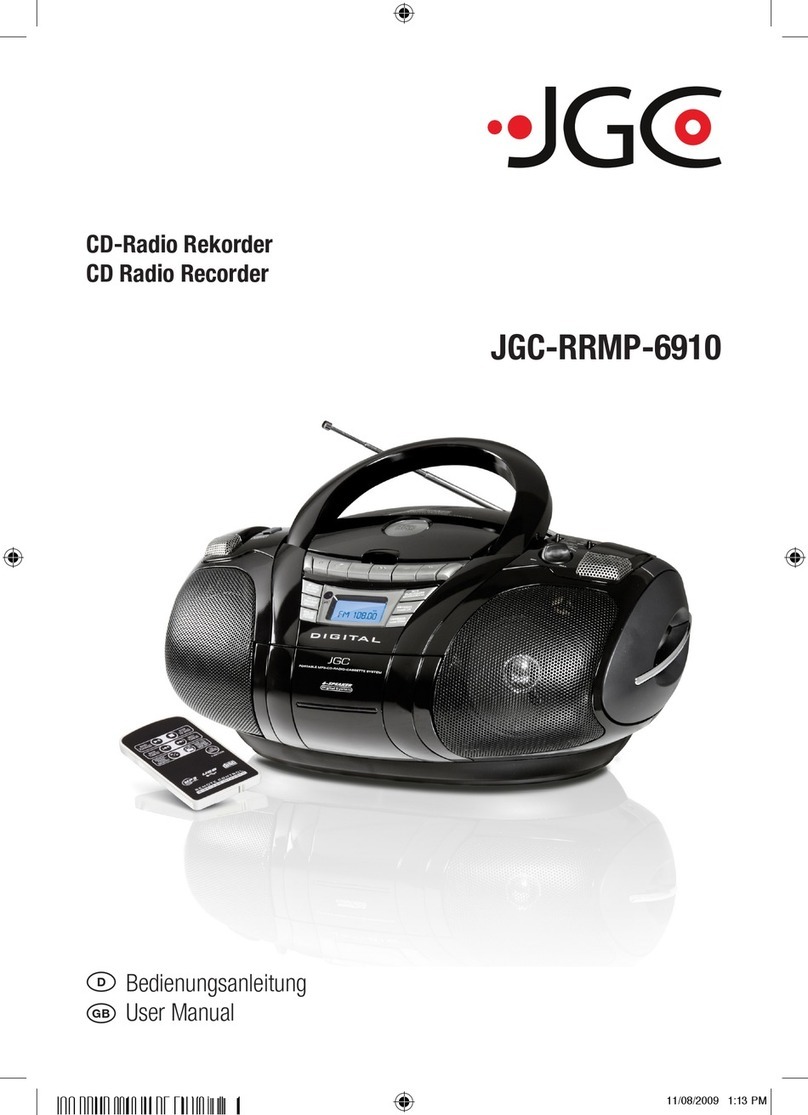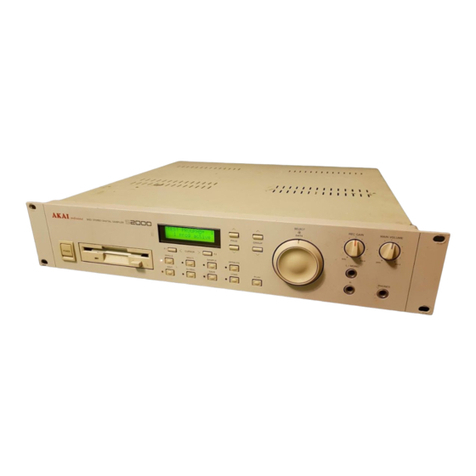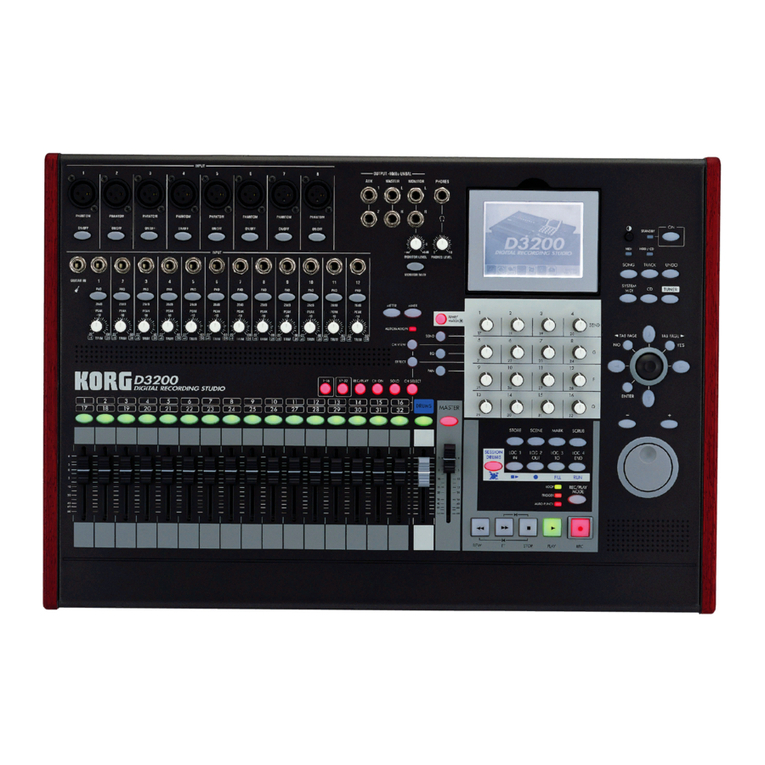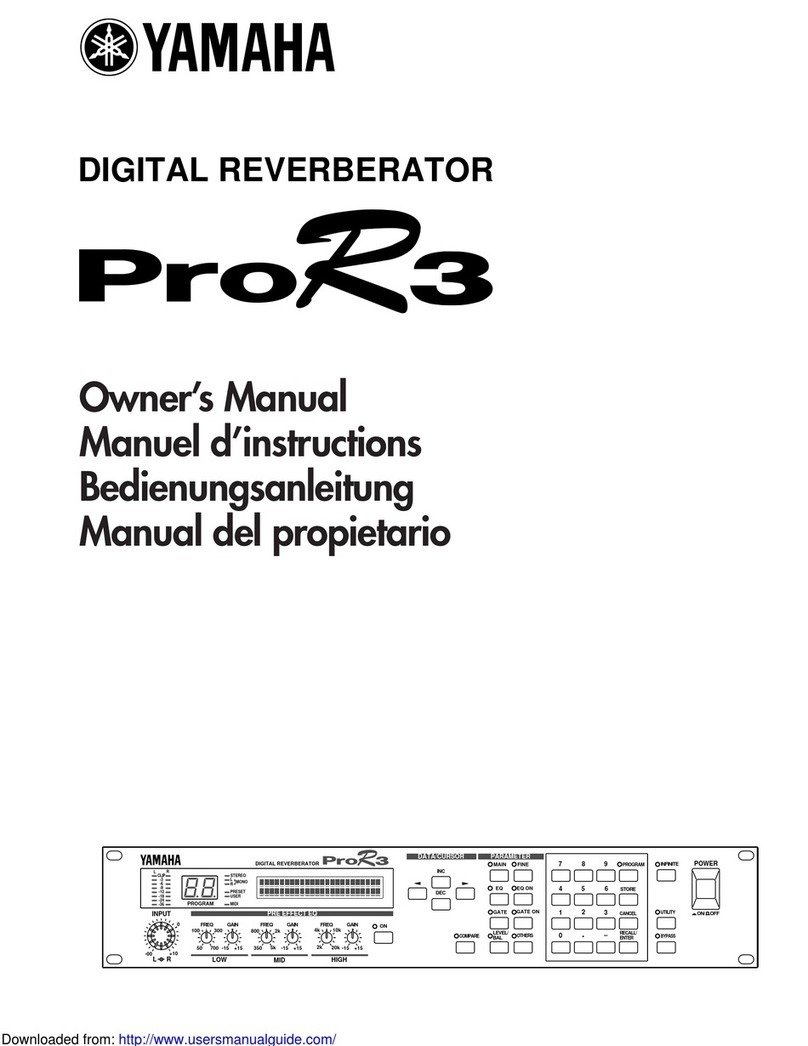KORNEFF PAWN SHOP COMP 2.0 User manual

PAWN SHOP COMP 2.0
USER MANUAL
korneffaudio.com

Pawn Shop Comp 2.0 - User Manual
___________________________________________________________________________________________________
PAWN SHOP COMP 2.0
Compression from smooth to punchy with Audio Nerd tweakability
The Pawn Shop Comp is a compressor emulation that not only gives you the vibe and mojo
of those vintage audio processors you know and love, but also allows you to pop open the
lid and tinker with the circuit! The audio path is based around a 1940's tube amplifier which
instantly places its round sonic fingerprint on your track. The tube amplifier's Preamp
section lets you"adjust the warmth and grit of your signal by adding harmonic distortion.
The solid state FET sidechain delivers the punchy, distinctive compression characteristics of
classic early-70’s compressors."
The Pawn Shop Comp 2.0 is an update to the original Pawn Shop Comp. The PSC 2.0
retains the distinctive sonics and mojo of the original, while adding oversampling, a new
GUI, and even more tweakability. It is a major expansion of the original, and if you liked the
PSC you'll love the PSC 2.0.
Minimum System Requirements Supported Plugin Formats
Quad Core i5 Processor Intel Mac 64bit: VST3, AU, AAX
4GB of RAM Windows 64bit: VST3, AAX
Mac OS X 10.14 or Later
Windows 7 & Above
1

Pawn Shop Comp 2.0 - User Manual
___________________________________________________________________________________________________
TABLE OF CONTENTS
1. Introduction
2. Table of Contents
3. Specifications
4. Overview
5. Front Panel Controls
6. Ideas on Setting the Compressor
7. Rear Panel Controls (The Other Side)
8. Ideas on Tweaking The Other Side
9. A Caveat
10. Ideas for Applications
11. Conclusions
Copyright 2020 by KorneffAudio Inc.
2

Pawn Shop Comp 2.0 - User Manual
___________________________________________________________________________________________________
SPECIFICATIONS
Type:
Compressor Amplifier
Gain:
56 db bridging 600 ohm line
Frequency Response:
±2.4 db, 30-15,000 cycles
Power Output:
+24 dbm (as straight amplifier)
Harmonic Distortion:
At 25 db of compression: Less than 9.4%,
35-15,000 cycles; (0 db threshold setting)
At 30 db of compression: Less than 6.5%,
25-10,000 cycles;
(0 db threshold setting)
Noise Level:
74 db below rated output (—111 dbm
equivalent input noise)
Input Impedance:
15,000 ohms bridging transformer
Source Impedance:
Any
Load Impedance:
600 ohms
Maximum Compression:
100 db
Attack Time:
Adjustable: .2ms to 200ms
Release Time:
Adjustable: .10ms to 1.2 seconds (67%
recovery)
Threshold:
Adjustable: 0 db to -100 db
Compression Ratio:
Adjustable: 2:1 to 50:1, with increments of 1
Power Supply:
117 volts, 60 cycles, 20 watts
Preamp Tubes:
12AX7, ECC83 or 5751
Output Tubes
6V6
Color:
Brown
Weight:
68MB Approx.
3

Pawn Shop Comp 2.0 - User Manual
___________________________________________________________________________________________________
OVERVIEW
The Pawn Shop Comp (we aren't going to write 2.0 anymore) has a wide range of controls
organized into the Front and "the Other Side."
The compressor controls are principally on the front panel of the PSC. If you click on the
KorneffAudio nameplate, the GUI changes and you're presented with even more controls.
This additional functionality makes the Pawn Shop Comp closer to an entire channel strip.
On the other side you can access a tube preamp, with adjustable gain and bias, which lets
add warmth and grit by adding harmonic distortion, and a two band EQ section, which lets
you add gentle vintage-style peaking equalization curves to the lows and mids. The preamp
has three choices of tubes, which allow you to further control saturation characteristics,
and three switchable transformer types, which give you surprising control over the overall
response of the plugin.
There's also an Operating Level control, which emulates mismatched gear levels, and lets
you dial in even more punch and attitude. There are output and input controls to properly
gain stage the Pawn Shop Comp in your signal flow, as well as a WET/DRY control for built-
in parallel processing.
Finally, you can switch between four sets of different resistors, which affect the high end
response, and two different types of FET's that yield different compression curves.
It is a bit overwhelming, but we like to say the PSC is a reverse mullet: the party is up front,
and the business is out back. So, if you want to make things easy on yourself, the front
panel compressor controls are all you need to quickly and intuitively dial in great sounds.
However, if you really want to fine tune the heck out of your signal and get the full
functionality of the plugin, go to the "other side" and go berzerk. You can tweak almost
everything back there.
4

Pawn Shop Comp 2.0 - User Manual
___________________________________________________________________________________________________
FRONT PANEL CONTROLS
ON - press this to engage the compressor circuit. If you switch this off, the compressor is
bypassed. Your signal will still go through the tube signal path, so you can still use the Pawn
Shop Comp as a preamp and EQ.
AUTO - this engages automatic makeup gain. 90% of the time you switch this on.
MANUAL MAKEUP GAIN - twist the screw at the center of the VU meter to manually adjust
makeup gain by +/-18dB.
THRESHOLD - lower this (turn counter clockwise) to set the level at which the compressor
begins working. This control also interacts with the makeup gain when that control is set on
AUTO, so you can concentrate on sound and not worry about levels.
RATIO - this controls how much compression is added when the signal goes above
threshold. Fully counterclockwise is 2:1 (not much compression). Fully clockwise is 50:1 (a
lot of compression—effectively a limiter).
5

Pawn Shop Comp 2.0 - User Manual
___________________________________________________________________________________________________
ATTACK - how quickly the compressor kicks in once a signal goes above threshold. This
allows you to control the peaks and transients of a signal. Set it fully counterclockwise to
nip offall but the fastest transients. As you turn it clockwise more of the peaks and
transients will get through and the sound will become punchier. The PSC is a beautifully
punchy compressor. Attack is adjustable from .2ms to 200ms.
RELEASE - how quickly the compressor stops compressing after a signal drops below
threshold. Adjustable from 10ms to 1.2s, RELEASE can have a lot of effect. Setting a short
release (counterclockwise) will tend to bring up the quiet parts of a signal—the breaths on
a vocal, the ring of a snare drum, room ambience, etc. Setting it long (clockwise) will keep
the compressor in longer and tend to smooth things out and make the compression less
noticeable.
PAGE TOGGLE - click on the KORNEFF AUDIO name plate to access the "other side" of the
Pawn Shop Comp for even more controls.
PRESET BROWSER - click on the piece of tape with the Sharpie Text (where it says PAWN
SHOP COMP) to access the preset browser and load and save presets.
IDEAS ON SETTING THE COMPRESSOR
When the Pawn Shop Comp first loads you'll hear a slight increase in gain, which is a design
feature and caused by the PREAMP control being slightly up. We did this so you absolutely
know that the unit is in your signal chain. The ATTACK and RELEASE are in a good, average
position. The RATIO is at 2:1 and the THRESHOLD is all the way up."
These initial settings are a good start. We usually begin working on a track by lowering the
THRESHOLD (counterclockwise) until the meter jumps a bit. Click on the AUTO makeup
gain. Turn up the RATIO a bit. Decide if you need more punch and then fiddle with the
ATTACK. Decide if you want more “pump” and more of the quiet details and fiddle with the
RELEASE."
If you want to really hear the compressor working, turn up the RATIO, set the RELEASE
short and turn the ATTACK clockwise."
If you want a very smooth sound, with minimal audible compression, lower the RATIO to
less than 4:1, set the ATTACK somewhere in the middle and turn the RELEASE clockwise,
perhaps even fully clockwise. Then lower the THRESHOLD so that the meter indicates the
compressor is working for most of the duration of the signal."
6

Pawn Shop Comp 2.0 - User Manual
___________________________________________________________________________________________________
The PSC's wide range of Attack and Release settings—from lighting fast to baby caught in a
glue trap—let the plugin catch the absolute quickest transients or mimic the more languid
behavior of a classic tube unit with an optical detector circuit.
We advise you to adjust the compressor section of the Pawn Shop Comp using your ears
and not your eyes. You'll be playing with it, it will sound great, then you'll notice the meter
is pinned and the ratio is set to 30:1, and you'll panic, "I'm crushing the crap out of things!
This can't be right! My audio teacher would kill me!"
Relax. If it sounds good, it is good. Don't worry about how things look. You’ll find it is very
hard to set the controls in such a way that the Pawn Shop Comp sounds bad.
(this space unintentionally left blank)
7

Pawn Shop Comp 2.0 - User Manual
___________________________________________________________________________________________________
REAR PANEL CONTROLS
PREAMP - turn this clockwise to increase gain and add gentle saturation for more warmth
and a slight lift in the high end (caused by added harmonic distortion).
BIAS - turn this clockwise to add grit and very audible distortion and crunch. Basically, this
control is emulating setting tube bias incorrectly. In an actual piece of physical equipment
this wouldn't be the best idea. On the Pawn Shop Comp, do what you want—you won't
break anything except the sound barrier!
PREAMP TUBES - There are three different sets of preamp tubes you can place in the
signal path. The default is a pair 12AX7's, which have pleasant distortion characteristics
and a moderate amount of gain. Switch to the ECC83 tube set for much higher gain and a
lot of distortion (if you turn up that PREAMP control!). The last set, 5751's, have much less
gain, and a warm, rounded and slightly "out of focus" tonality.
8

Pawn Shop Comp 2.0 - User Manual
___________________________________________________________________________________________________
TRANSFORMERS - you can choose from three transformer types, each of which give the
Pawn Shop Comp a different overall frequency response and different distortion
characteristics when you hit the unit hard. Nickel has a flat response, Iron is bright and
tight sounding, and Steel is round, dark and has a low end bump.
WEIGHT - is an adjustable inductor emulation peak style EQ, similar to that found on
vintage Neve preamps. The response curve is a wide, gentle bell. There are two center
frequencies to choose from, 63Hz and 171Hz. These frequencies were carefully selected to
catch kick drum frequencies (63Hz) or affect the "warmth" area of the frequency spectrum
(171Hz). Gain is initially at 0dB gain. Turning it clockwise will add up to +8dB of gain,
counterclockwise will reduce it by -8dB. WEIGHT was added to the Pawn Shop Comp as a
way to compensate for the loss of bottom end when a signal is really squashed by
compression. It is NOT a surgical eq. Setting it to 63Hz and cutting will not effect hum.
But if you're really hammering a signal with the Pawn Shop Comp’s compressor circuit,
adding a few dB of WEIGHT will restore bottom end and balance. Conversely, when
compressing things like vocals and acoustic guitars, a little bit of cut at 171Hz can clean up
an otherwise lumpy, chesty sounding track.
FOCUS - this adjusts a gentle (wide Q) peak-style inductor EQ centered at 1.2 kHz and
2.4kHz. It's initially at 0dB gain. Turning it clockwise will add up to +8dB of gain,
counterclockwise will reduce it by -8dB. 1.2 kHz is an ignored area and people are very
hesitant to boost in here, because too much can sound harsh and/or honky. However, with
a wide, gentle curve, a slight boost in here adds presence and "width." Adding a dB or two
of FOCUS across, say, a drum bus, will make the kit sound wider. It's psychoacoustics for
sure—there is no spacial processing going on in the Pawn Shop Comp—but try it and see if
it doesn't "open things up" in your mix.
While 1.2kHz and 2.4kHz might seem to be very close together on the spectrum, there is a
tremendous difference between the two. The 2.4kHz setting has a lot more effect on the
signals highs - it seems to get up into the "air band" area while still remaining quite
smooth. The 1.2kHz setting feels much lower and solidly in the middle of the audio
spectrum.
OPERATING LEVEL - turn this up to add gain, presence and "in your face." Turn it WAY up
to get HUGE amounts of distortion.
In the old days, mismatched operating level would tend to blow gear up. Literally. Like
smoke from behind the rack and a bad smell and a repair bill from the studio. With the
Pawn Shop Comp, the worst you can get is some digital clipping. Very often turning this up
3dB (clockwise just a tiny bit) can make a big difference.
9

Pawn Shop Comp 2.0 - User Manual
___________________________________________________________________________________________________
INPUT and OUTPUT - these are trims and what you think it does: adjusts the input feeding
in and output levels feeding out. If you're adding a lot of gain via the PREAMP, BIAS and the
OPERATING LEVEL controls you will be adjusting the OUTPUT down. A lot. If the signal
feeding into the Pawn Shop Comp is low—like the track was recorded too low—you’ll be
able to compensate for that using the INPUT control.
WET/DRY - use this to blend unprocessed signal (dry: what is feeding into the Pawn Shop
Comp) with processed signal (wet: the signal after you run it through all of the elements of
the Pawn Shop Comp). This is a very useful control.
Sometimes, after you work on a track or a bus or a channel in solo (which everyone says
you shouldn't do but everyone does), you'll un-solo the track and hear it in context to the
rest of the mix, and realize you maybe went too far. Back down the effect by turning the
WET/DRY counterclockwise until it fits in better."
RESISTORS - There are four resistor choices, which affect mainly the high end of the plugin.
Metal Film 1% is the brightest and most transparent, while Carbon Composition is the
darkest. Metal Film settings will give the Pawn Shop Comp a bright, modern sound, while
Carbon settings round offthe high end a bit and add a bit of noise for a more vintage vibe.
This is a very subtle effect and it will get lost in a big, thick mix. However, if you're working
with less sound sources—a voice and an acoustic guitar, as an example, switching it over to
Carbon resistors is a nice touch.
FET - this allows you to adjust the compression curves by selecting between two different
sets of FET emulations. 2N5486 FETs give a lot of predictable punch and give the Pawn
Shop Comp a response similar to vintage '70's Neve solid state compressors, API
compressors, 1176's and more esoteric things like the ADR Compex. 2N3820 models an
FET set that had some design issues which cause some unpredictable behavior. Sometimes
you'll click over to the 2N3820 setting and hear no difference, but sometimes it will sound
better, and other times it will loose punch and sound smoother... it really depends on what
you send through it.
IDEAS ON TWEAKING THE OTHER SIDE
There is so much tweakabilty on the back side of the Pawn Shop Comp it is hard to know
where to begin in terms of giving guidance. BIAS is great for adding buzz and distortion to
basses and really hard-assed vocals. Turning up PREAMP can get a little more oomph and
sparkle out of a softer vocal, acoustic instruments, and snare drums.
If you're not wacking the preamp gain up, the choice of tubes won't matter that much, but
at high preamp gain settings, the tube choices make a HUGE different. ECC81's are the
preamp tube of choice for Marshall and other high gain guitar amps for a reason. Switching
10

Pawn Shop Comp 2.0 - User Manual
___________________________________________________________________________________________________
them in for the PSC adds a ton of distortion. The 5751 is always very gentle, and even at
normal gain settings will tend to round out the signal a bit. Good for softer things like
quieter vocals.
As stated earlier, 3dB up on OPERATING LEVEL pushes the whole track forwards and more
"in your face." The operating level is sort of a secret weapon on the PSC.
You'll find that you end up using the PSC on a lot of channels in your mix. A nice trick is to
leave the Operating Level alone on all of them, and then goose any track you want to stand
out a bit - a lead vocal or instrument, a kick, by 3dB and it sort of... jumps out. This is not
like Spinal Tap's "This one goes to 11." There is a change in saturation and harmonics when
you push on Operating level that seems to shove things out of the speakers a bit more.
If you want to cause all sorts of noise and distortion, turn down the OUTPUT a lot and
crank up BIAS and PREAMP and OPERATING LEVEL... you'll get total mayhem."
A CAVEAT
Because the Pawn Shop Comp is a digital emulation, you can tweak it in ways that you
would never do with a physical piece of audio equipment. In the real world things blow up
and burn out. HOWEVER, all digital equipment is capable of tremendous amounts of gain,
the Pawn Shop Comp included. Digital clipping is a real possibility, and a digitally clipped
signal going through speakers at a high volume is NOT GOOD AT ALL. You don’t want to
burn out the voice coils of your speakers, so by all means experiment but be sure to watch
the levels feeding out of your gear and into your monitor amplification: you don’t want to
digitally clip signals.
IDEAS FOR APPLICATIONS
The Pawn Shop Comp wasn’t designed to do any one specific type of task. It’s not a vocal
compressor or a bus compressor. It works well everywhere. In fact, for many users, it is the
first processing plugin reached for when working on a track. Because it is so versatile, and
because it is so hard to get a bad or unusable sound out of it, it is difficult to give specific
setting for a particular application. So, here are some ideas and guidance to get you
started.
On Bass
The Pawn Shop Comp combines the warmth and smoothness of a tube compressor and
the punch of a FET limiter, so it is a natural fit for bass. Start with the ATTACK to about 1
o’clock and the RELEASE to about 10 o’clock, and RATIO at 8:1. Turn down THRESHOLD to
11

Pawn Shop Comp 2.0 - User Manual
___________________________________________________________________________________________________
get the meter jumping. Too short a RELEASE can result in some strange things in the
bottom end as the compressor starts “riding” the peaks and valleys of the waveform rather
than responding to the bass sound in its entirety (all compressors with a fast release do
this). Use the ATTACK to get control of the transient, set it slower to make the bass
punchier.
On the Other Side, use BIAS to get a fuzz bass effect, FOCUS can make things more
articulate, and WEIGHT set at 63Hz can strengthen the bottom end if you crank it way up.
You might also think about doing a small cut with WEIGHT at 63Hz if the bass is getting in
the way of the kick, or if the whole bottom end is a bit too big.
On Electric Guitars
Pawn Shop Comp ’s designer, Dan Korneff, is renown for guitar sounds, so it is a given that
the Pawn Shop Comp sounds great on electric guitars. Use slower settings on the ATTACK
control to bring out picking and percussiveness. Setting the RELEASE long can make hand
noise and hum less obtrusive, but too long a release tends to dull down the entire guitar
sound.
On The Other Side, the WEIGHT control is almost specifically designed to add back in
missing bottom end on compressed guitars, while FOCUS will bring out note articulation.
Use the 63Hz setting for really low guitar parts (maybe throw a high pass filter on the
channel first to get rid of any guitar subharmonics). The 171Hz setting will bring out electric
guitar warmth. BIAS and PREAMP can be used together to add a nice simulation of old
tube amp crunch and breakup. Switch to the ECC83 and the IRON transformer for a more
high gain amp sound.
On Acoustic Guitars
The same ideas apply to acoustic guitars as electric: control the percussive character of the
acoustic guitar using the ATTACK knob, use the RELEASE to control resonance and sustain,
as well as sparkle.
The WEIGHT control on the back can be used to cut out some lower end boom (171Hz), and
a boost in FOCUS at 1.2kHz will increase articulation and presence. For more sheen, set
FOCUS at 2.4kHz.
On Vocals
The Pawn Shop Comp can be used to barely touch a vocal or smash it to hell and back.
ATTACK controls the bite and intelligibility of the vocal, RELEASE controls breathiness and
can be used to increase intimacy (at faster settings). Long RELEASE settings will dramatically
smooth vocals out. Start with RATIO at 4:1 and see where it goes from there.
12

Pawn Shop Comp 2.0 - User Manual
___________________________________________________________________________________________________
One of the few times we think you should be looking at the meter is setting release times.
Ideally, you want the Release set so that as the vocal trails offor gets quiet, the meter
needle is moving back to 0dB. When the vocal dies out the meter should be back to 0.
On The Other Side, get rid of lower end chestiness by doing a tiny cut with WEIGH at
171kHz, and top offand widen the vocal a bit with FOCUS set to 2.4kHz. You can lean
pretty hard on the FOCUS without making the vocal sound harsh and chiffy. Use that
OPERATING LEVEL control to add gain and presence to the vocal. Crank it way up (don't
forget to drop the OUTPUT level a little!) to get distortion and mojo happening. A touch of
gain added with the PREAMP control will give vocals a nice, glassy sheen.
Experiment with the TRANSFORMERS on vocals. In some cases there will be almost no
effect, but in other cases the effect can be huge. Happy songs = Iron? Sad songs = Steel?
On Drums
Again, the Pawn Shop Comp was developed by an engineer known for great rock drum
sounds, and he made the plugin for his specific work so... It’s great on drums. Use it on
everything from kicks to snares to toms. Turning up OPERATING LEVEL by 3dB or more
makes drums jump out of the speakers like cannons. Dialing in a higher BIAS setting can
add vintage overload crunch to a kick. The WIEGHT control, set to 63Hz, is specifically useful
for drums and kicks in particular.
The Pawn Shop Comp works on overheads, but we suggest for this application that you set
a little too much compression—really get those cymbals to last, and then go to The Other
Side and dial in some unprocessed signal using the WET/DRY to recover lost high end. IRON
transformers work well on cymbals and switch in METAL FILM resistors for maximum high
end.
Across the Drum Bus
On a drum buss, the Pawn Shop Comp is flat out amazing, and you can get sounds from
subtle to the classic "All Four Buttons Down" sound of the 1176. Use the RELEASE to adjust
how much room sound there is (fast release = more room) and ATTACK to let the initial hits
get through (slower attack = more punch... up to a point. Too slow an attack results in
loss"of punch and very little compression applied to the tracks). In fact, often when working
on a mix we’ll put the Pawn Shop Comp on the drum bus first thing and start playing with
settings before working on any of the drum tracks individually.
WEIGHT and FOCUS are especially handy on the drum bus. Cutting at 171Hz can clean up a
sloppy, mushy room, and a bit of a push at 2.4kHz is nice for cymbals and high hats.
13

Pawn Shop Comp 2.0 - User Manual
___________________________________________________________________________________________________
Across the Mix Bus
The Pawn Shop Comp wasn't specifically designed for use across the mix bus, but,
predictably, it works great there as well.
For a more vintage sound to your overall compression, switch in the 5751 tubes and the
STEEL transformer. The CARBON COMP resistor setting will pull down the highs a bit and
the overall sound will be smoky and loose. If it is too dull, either switch resistors to
something in the METAL FILM family or use the WET/DRY control to ease offthe effect and
add back some of the unprocessed signal to restore the high end a bit.
For a modern bus compressor sound, use the NICKEL transformers and METAL FILM
resistors.
The Pawn Shop Comp across a mix adds a lot of punch, especially if you set the ATTACK a
bit slow and the RELEASE on the short side.
Remember that ATTACK effects the wavefront—the start of signals, the transients. Too fast
an attack and you'll dull down your whole mix because the high end is usually in the
transients. Perhaps start with Attack fully to the left and ease it to the right until the mix
sort of peps up and pops.
Remember that RELEASE effects how much the dynamics of the song vary from section to
section, and how much quiet detail can be heard. Release effects the wave ends. That
might not be a real term, but think of it as the portion of the signal as it dies out. Start with
the RELEASE at 12 o'clock and experiment moving it to the left and to the right. There's a
spot where the mix will sound even and yet is exciting. That is where you want to set that
release.
People talk about bus compressors adding "Glue" and getting everything to work together
harmoniously. The Pawn Shop Comp is more like epoxy on a mix if you overdo it… ever get
epoxy everywhere? It makes a mess. However, feel free to overdo it, and then back it down
using WET/DRY.
CONCLUSIONS
Ok, there it is—the Pawn Shop Comp in a huge nutshell. Please visit our Facebook group
(https://www.facebook.com/KorneffAudio/) and leave a message there if you have any
questions, or email us directly at info@korneffaudio.com.
Thanks again for supporting KorneffAudio. We hope you love your Pawn Shop Comp.
Make great records! Make great music.
14
Table of contents
Other KORNEFF Recording Equipment manuals
